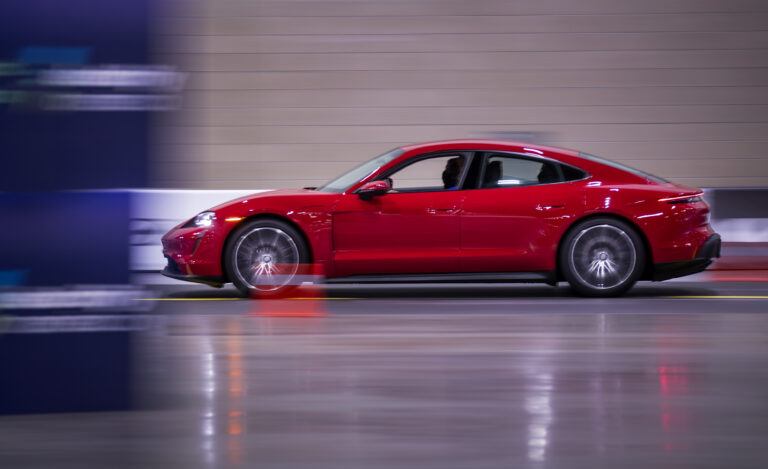Kia’s EV6 is the new benchmark for affordable electric cars
We got our first good look at the EV6 last March and, nearly a year later, finally got to sit in it, drive it, and push every button in the cabin last week during a day-long press event in Northern California. It’s the first Kia vehicle to be produced under the company’s new Plan S electrification strategy and is expected to be joined by nearly a dozen other new EV models by 2026 – with Kia noting that “All dedicated Kia EVs will begin with the ‘EV’ prefix, followed by a number that indicates the car’s size and position in the lineup, not its chronological place in the launch cadence.”
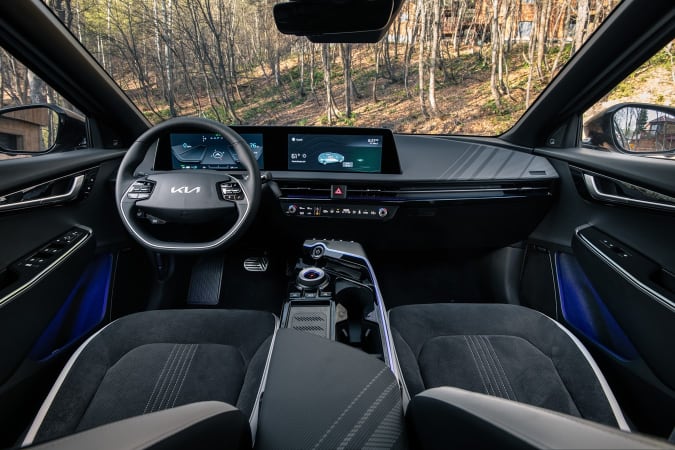
Hyundai Motor Group
And that’s just vehicles built on the Hyundai Group’s (which owns Kia) E-GMP battery-propulsion platform. When the EV6 arrives in all 50 states later this spring, it’ll be going up against the likes of the Ford Mustang Mach-E, the Volkswagen ID.4, the Tesla Model Y, the Ioniq 5 and Nissan’s Ariya — not to mention Kia’s own Niro EV and its brother from a Hyundai mother, the Kona EV — also probably the Toyota bZ4X and Subaru Solterra when they eventually arrive as well.
The EV6 will be made available in three trim levels: Light, Wind, and GT-Line. Technically there’s a fourth version, the First Edition, but the 1,500 units in that introductory lot sold out in something like 11 hours so your chances of catching one for sale at the local dealership are quite low.
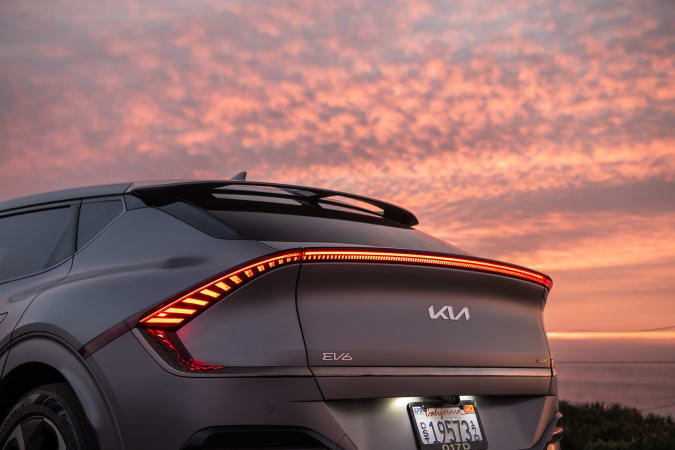
Hyundai Motor Group
The EV6 Light is Kia’s introductory trim level, retailing for $40,900 and offering performance to match. Its 58 kWh nickel-cobalt-manganese battery powers a 168k W rear motor to produce 167 horsepower. That translates into an 8-second 0-60 with an electronically limited 115 MPH top speed and an EPA-rated range of 232-miles. In terms of efficiency, the Light will net you around 136 eMPG in the city (thanks, regenerative braking!) and 100 eMPG at freeway speeds. Like its better-appointed brethren, the Light employs MacPherson struts up front and a multi-link suspension in the rear.
Its drivetrain, unfortunately, can only handle a 400V charging architecture which lengthens the amount it takes to fully recharge it. It’s not terrible, mind you, with a full charge off a 50W DC fast charger taking just over an hour — and a cool 18 minutes if you’re lucky enough to snag a 350W station. At home, using a 240V / 48A connection (ie a home-charging box), you’re looking at just under 6 hours for a full charge but with a standard 110V / 12A socket (like what you plug your coffee maker into), that’s going to take days. Literally it’d have to sit on charge for more than a weekend — 51 hours and 5 minutes specifically, according to Kia’s numbers — to max out its battery capacity. You’re not going to see the same delays with either the Wind or GT’s on account of them using the same 800V-style drivetrains that we’re starting to see on higher-end EVs like GM’s Hummer EV, the Porsche Taycan, Audi’s E-Tron and even the Mach-E.
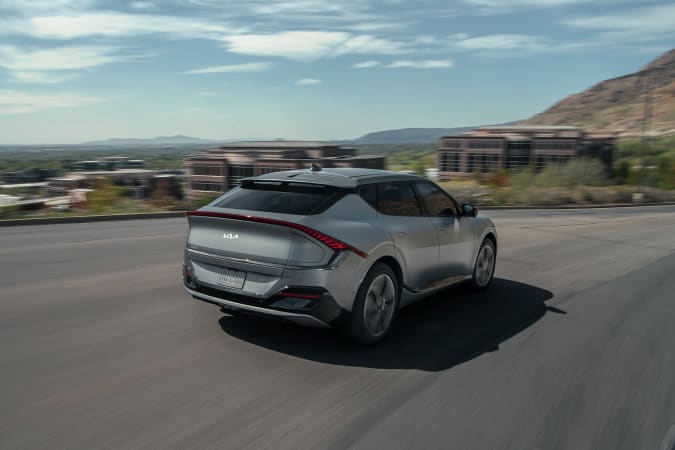
Hyundai Motor Group
What’s more, the Wind (starting at $47,000) and GT (starting at $51,200 and topping out at $55,900) both offer larger 77.4 kWh packs as well as the option of having both front and rear motors, enabling AWD. You’re looking at 310 miles of range with a 7.2 second 0-60 and 117 MPH top speed with the RWD iterations; 274 miles of range and 5.1 second 0-60 for the AWDs. The AWD notches 134 eMPG in cities and 101 eMPG on freeways, though the AWD’s efficiency takes a noticeable hit, 116 eMPG and 94 eMPG, respectively.
In terms of charging, the Wind and GT will require 73 minutes for a full charge on a 50W DC connection (and again, 18 minutes with a 350W port which provides roughly 217 miles of added range), about 7 hours on a 240V plug and a whopping 68 hours using 110V. They’ll also offer another first for Kia, V2L (vehicle to load) capabilities similar to the Ford F-150 Lightning meaning that you’ll be able to use the EV6 as a giant, rolling battery to power various accessories, 110V power tools and sundry household items in the event of a blackout.
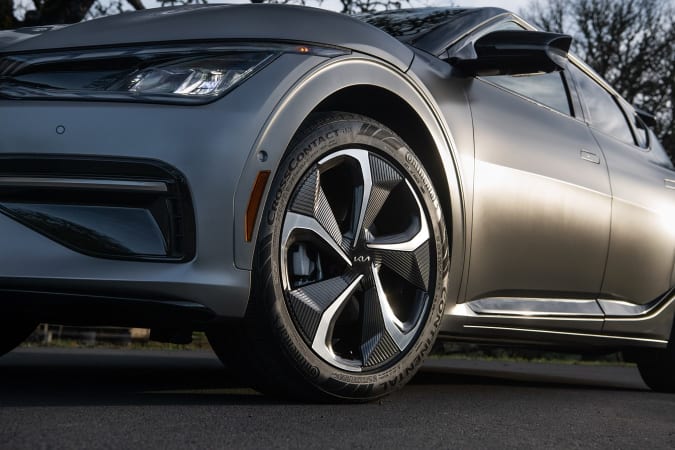
Hyundai Motor Group
Aside from the trim levels and powertrain differences, the various EV6s are practically identical from the outside given the common E-GMP underpinnings. Each measures 114 inches at the wheelbase (same as the Telluride SUV) with an overall length of ~184 inches. The crossover is 74 inches wide and 60.8 inches tall. The EV6 may look like a svelte sports coupe from its promotional photos but in real life, this is one chonky boi — not quite as tall as the Mach-E but just as broad and sporting beefy 19-inch rims (dubs are optional on the GT). It really fills out a standard parking space, though Kia is offering a cool valet feature (optional on Wind, standard on the GT) with the EV6 that allows you to line up the vehicle with a parking space, get out of the car and then use the key fob to remotely back it into the spot.
The EV6 has a damn comfortable interior. Its cabin is disconcertingly quiet with the doors closed and windows up. There’s a total of 102 cubic feet of space inside the EV6, 24.4 of which is dedicated to storage in the rear cargo area (50.2 cubic feet if you fold the seats down). You’ve got plenty of head and leg space regardless of whether you’re sitting in the front or back, though you might need to slouch a bit to fit three sets of shoulders across the rear bench seat. On the plus side, there is no central drive shaft running under the cabin (thanks, e-motors!) so there’s no hump to endure if you’re sitting in the middle.
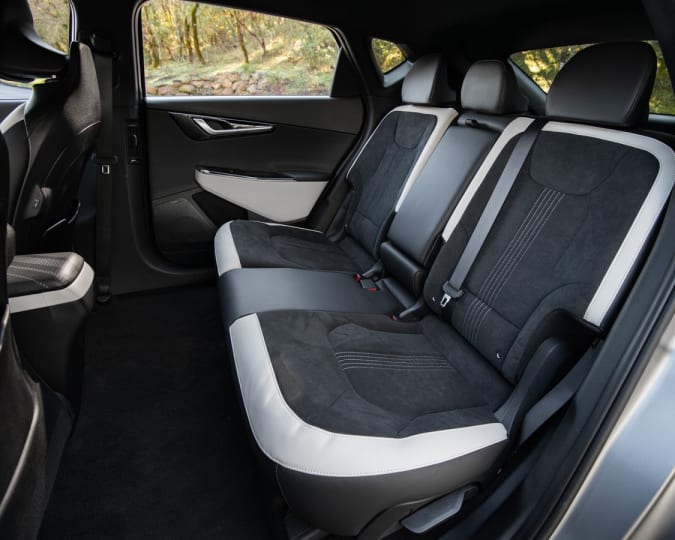
Hyundai Motor Group
Kia also sprinkled USB and USB-C ports throughout the front and rear seating areas so you won’t have to stretch very far to plug in. Heck there’s even a wireless charging pad on the front armrest (next to the engine start button and drive selector). My only bugaboo with the seating layout was a minor one: the front seats employ a rather elaborate headrest that tends to obscure the forward facing view for people in the rear of the vehicle and, conversely, block out a noticeable portion of the rearview mirror.
Blind spots are not really a worry, however, seeing how many cameras Kia managed to pack into the vehicle. For example, when you engage your turn signal, a live rear-facing video feed from the side mirror pops up on the driver’s instrument cluster so you don’t cut off bicyclists or merge into the path of a tractor-trailer. You’ve also got a slew of 21 different ADAS (driver assist) features including rearview cameras for parking, lane keeping assist, lane departure warnings, automatic high beams, and forward collision avoidance.
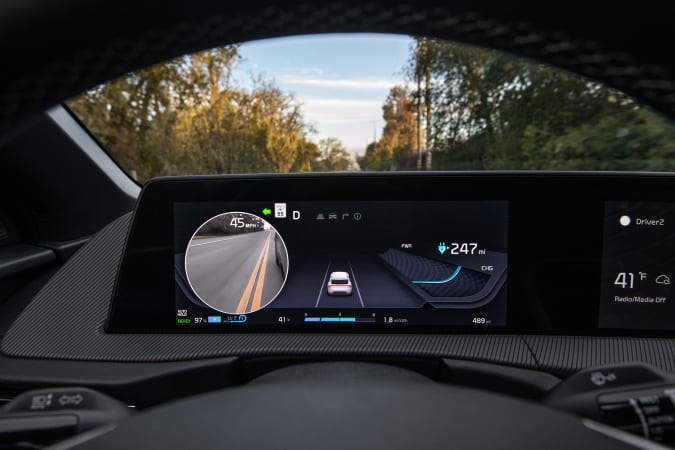
Hyundai Motor Group
I was especially impressed with the EV6’s level 2 highway autonomy driving feature, Highway Driving Assist 2. Just click the appropriate button on the steering wheel and the adaptive cruise control will automatically center the vehicle in the lane, maintaining its course and speed even through turns. There were a handful of times when the system and I (and the car in the next lane over) mildly disagreed when a turn in the road either began or finished but as long as I kept my hands on the wheel, minor course corrections were no big deal.
If anything, the reduced need to keep my eyes on the road allowed me sufficient time to figure out how to work the rather confusing central infotainment system. The EV6 comes equipped with a 12.3-inch color TFT touchscreen navigation display unit mounted into the center console. It offers AM/FM/Sirius radio running through a Meridian sound system, Bluetooth connectivity, a WiFi hotspot, and Android Auto/Apple Carplay — ugh, the phone has to to be physically tethered to enable Carplay/Auto? Really? This is what we’re doing in 2022?
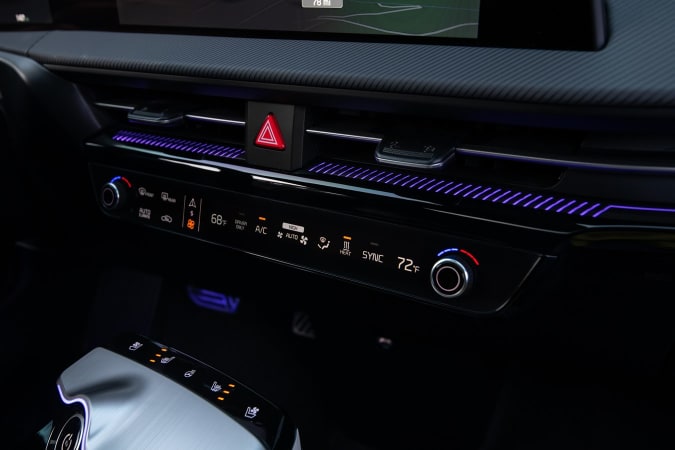
Hyundai Motor Group
I’m a fan of the physical volume and temperature control knobs that Kia incorporated into the design, not so much a fan of the lower, secondary touchscreen which alternates between a quick selection bar for the media, navigation, and climate menus. The problem is that the button space that flips functionality between the menu select screen and the dedicated climate control menu is not well defined or really delineated in any meaningful way (I honestly thought it was the button for the hazard lights until a Kia PR rep showed me otherwise) so unless you either know what you’re specifically looking for or tap it at random, there’s no direct way to change the cabin temperature, adjust the fan speeds or activate the defogger — or, conversely, quickly access the navigation map or radio. And asking the onboard virtual assistant for help in doing so was like talking to an (even more) incompetent Siri; there was no amount of enunciation that could get this thing to understand the words that were coming out of my mouth.
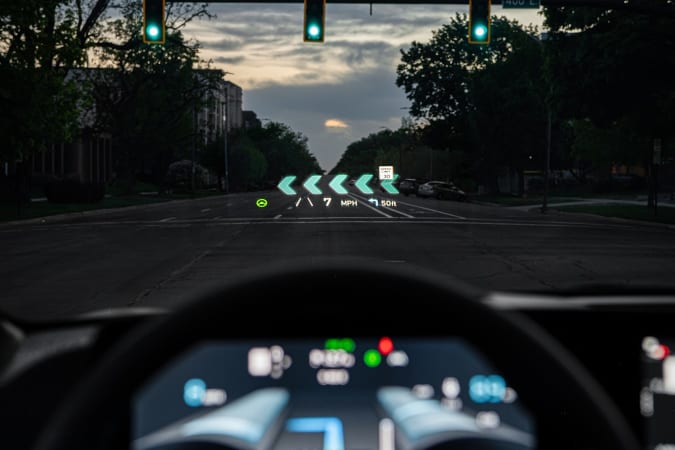
Hyundai Motor Group
There was one feature that really stood out to me, easily redeeming the secondary touchscreen’s learning curve, and that was the AR display. It is absolutely brilliant. I gushed about Kia’s use of AR back in 2019 when I drove the Niro EV. That one seemed more a proof-of-concept with its little pop up screen mounted on the steering shaft. The EV6’s, instead, is a far more finished and polished product beamed directly onto the front windshield with startling clarity. The vehicle’s speed, the road’s speed limit, the status of various cruise control features, and upcoming turns all appear to be floating about a car length ahead of you. It’s a fantastic, streamlined alternative to the, in my opinion, overly busy layout of the driver’s cluster. The information can be a bit tricky to read when wearing sunglasses (especially the polarized variety) but other than that, the display is easily understandable regardless of how bright or dark it is outside and can be adjusted to account for the driver’s height and viewing preferences.
Of course all these technological bells and whistles would be rendered moot if it handled like the decrepit Elantra I usually drive. Thankfully, the EV6 does not. It isn’t as overtly aggressive as the Mach-E, nor is it quite as nimble through turns as the Polestar 2 — it certainly isn’t near as pretentious as the Model Y — and the EV6 doesn’t have to be. Kia, from what I gathered from the company’s pre-drive presentation, is positioning the EV6 to be a Gen Z family sedan, a Taurus SHO for millennials, and for that I applaud them. Cranking through hairpins on the 175 and opening up the throttle along quiet stretches of the 101 were fun and all but this car is not built for racing — it’s not going to suck the fillings out of your teeth when you floor the accelerator, you’re not going to be taking street bikes on the inside through turns in it. What the EV6 will do is help ferry your anklebiters to soccer practice before you run errands around town for the afternoon — maybe even take the family out glamping on the weekend — and do it in comfort, style and safety.
All products recommended by Engadget are selected by our editorial team, independent of our parent company. Some of our stories include affiliate links. If you buy something through one of these links, we may earn an affiliate commission.





